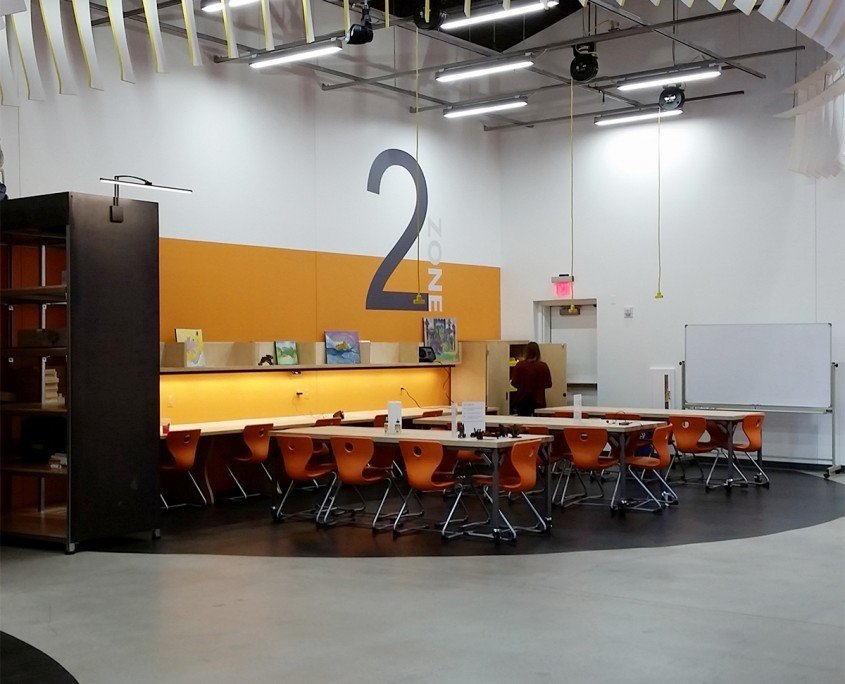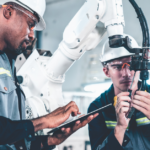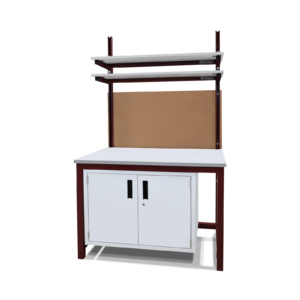Have you tended to dismiss the maker movement as a flash in the pan, a triumph of marketing sizzle over substance? You might want to think again. Like previous technology waves that started out small but ended up big — ranging from personal computers to online commerce, the maker movement is rapidly becoming a mainstream phenomenon with major implications for the industry. Makers are poised to transform hardware development and product design in the same way that the open source software movement fueled the rise of new Internet and mobile device software applications.
The Rapid Rise of the Maker Movement into the Mainstream
First, a disclaimer. We know there is nothing new under the sun. Looking back in history, many of the great industrial giants got their start working in garages or small-scale laboratories:
- Henry Ford built his first gasoline-powered vehicle in a garage (and famously had to tear down part of a wall to push it outside).
- Both Thomas Edison and Nikola Tesla (the inventor, not the car) had a series of laboratories where they tinkered away at new inventions.
- Bill Hewlett and David Packard started developing audio oscillators in their garage at 367 Addison in Palo Alto.
- Prior to their big break selling an operating system for IBM PC computers, Bill Gates and Paul Allen created hardware to automatically measure car traffic.
- Steve Wozniak designed and hand built the first Apple computers.
Given this history, what makes the maker movement new and different?*
The answer seems to be that the philosophy of the maker movement has hit a critical mass that’s now being felt by manufacturers and educators alike.
Not only are the tools of the trade for manufacturing becoming more widely available to individual inventors and artisans, there have been many instances where the level of product innovation and customization coming out of maker spaces has matched or even overtaken that of projects developed in conventional “big company” product development pipelines. The result? Traditional manufacturers are taking a keen interest in maker spaces as a source of innovative product ideas — as well as a source of skilled technical talent.
At the same time, there is hope that incorporating maker spaces into the educational system can finally help deliver those elusive tangible economic benefits long promised by advocates of STEM (Science, Technology, Engineering, and Mathematics) programs.
(* To learn more about the maker movement and maker spaces, read our interview with Mark Emanuel of TechShop, a leading maker space company with locations across the US. )
According to the American Society for Engineering Education (ASEE) summit report “Envisioning the Future of the Maker Movement,” educators will play a critical role in the ultimate success of the maker movement. Indeed, educational institutions and libraries across the country have been ramping up development of maker spaces.** Meanwhile, prestigious engineering schools, such as the Massachusetts Institute of Technology (MIT), are taking student’s maker portfolios into consideration during the application process.
(** See our article on things educators and librarians should consider when building a maker space. )
https://www.youtube.com/watch?v=hqVZ_WfbYHo
Many digital technologies used in maker spaces, such as 3D Printing, are moving from the prototyping stage to production lines as major manufacturers (like Ford Motor Company) use 3D printing (now dubbed “direct digital manufacturing”) to create parts. In the video above, John B. Rogers, Jr., CEO and Co-Founder, Local Motors talks about how direct digital manufacturing and micro-manufacturing will revolutionize manufacturing and design processes.
Why the Future of America’s Economic Success Belongs to Individual Innovators and Artisans
The barriers to entry for individuals wanting to develop and manufacture innovative products is lower than ever before. Product prototypes that once cost many thousands (if not millions) of dollars can now be created in maker spaces at far lower cost.
Not convinced? Perhaps this side-by-side comparison of today’s technology costs versus forty years earlier (at the dawn of the PC revolution) will convince you:
Decreasing Barriers to Entry for Individuals Manufacturing Custom Products: Today Versus 40 Years Ago
| 1977 | 2017 | |
| Computing Hardware | Mainframe or Mini $$$$ or Hobbyist PC Kit $$ | PC Notebook $350+, nVidia graphics card $100+, Rasberri Pi $5 |
| Design Software | Limited and proprietary $$$$ | AutoCAD $100+/mo, open source software $0 |
| Networking | Limited and proprietary $$$$ | Internet / TCPIP $0 |
| Data Storage | IBM Winchester 75 MB $$$$ | 3 TB disc $100, cloud storage, AWS 1 GB $0.01+ per hour |
| Server Application Development | Mainframe software $$$$ | Internet apps based on open source stacks, e.g. LAMP $0 |
| Prototype Printed Circuit Board | Handmade $$$$ | $750* first article, $8k fab line |
| Plastic Prototype | Aluminum tooling $2,500+ | 3D Printout $50+ |
| Hardware | Proprietary $$$$ | Open source $ |
| Fund-Raising | Company or VC- Angel | Company / VC-Angel / crowd-sourcing |
| Sales and Marketing | Dedicated staff $$$$ or distributor $$ | Online sales and marketing platforms $, online shopping $ |
As you can see from the table above, costs for designing, developing, prototyping, and testing products today is significantly cheaper (in many cases by an order of magnitude) than forty years ago — and the capabilities of today’s hardware and software is better beyond measure, not to mention innovations like online sales and investment crowd-sourcing (which did not exist in 1977).
The bottom line is this: thanks to these changes, artisans can become manufacturers; consumers can become makers.
5 Ways Makers Are Having an Impact on the Future of American Manufacturing
Given this list of economic advantages now favoring individual makers, the question is what will happen next.
What’s going to be the bottom-line effect on American manufacturing, both nationally and in regional and local economies?
We’ve identified 5 aspects of the maker movement that will have a major impact on the future of American manufacturing.
1. Benefits of Achieving a Critical Mass in the Maker Community
Have you often heard the lament “No one makes anything in America anymore” ?
James Fallows has written a series of articles on the maker movement in The Atlantic in which he theorizes that much of China’s recent success in high tech manufacturing is due in part to the high concentration of producers in a small geographical areas, such as the Shenzhen Special Economic Zone outside Hong Kong or the Pearl River Delta region surrounding Shanghai.
Fallows contends that America needs to develop similar communities of individuals, engineering companies, factories, and suppliers to compete in product development and manufacturing. In the US, Silicon Valley is a good example of how this type of community can work together (even as competitors) to create new products — Fallows contends this approach needs to be replicated many times over across the country.
Indeed, the maker space movement can serve as a catalyst for re-establishing this level of product development concentration, particularly in regions with a long heritage in manufacturing.
There are reasons to be optimistic. The Maker City Playbook, the Urban Manufacturing Alliance, and Make magazine (sponsors of the National Maker Faire) keep tabs on the latest regional developments.
Here are three noteworthy examples:
- In Brooklyn, an 84,000-square-foot industrial facility, dubbed New Lab, has opened. This public-private partnership hosts 80 hardware oriented startup companies.
- In Louisville, the former GE appliances division (now part of Haiwa) has created First Build, a maker space focused on developing small and major home appliances. Recent products designs include a pizza oven and countertop ice maker.
- In the San Francisco Bay area, Highway1 (a PCH Company) is a maker space dedicated to helping hardware startup companies bring their products to market.
2. Impact of Crowd Funding and Online Sales and Marketing Platforms
Close inspection of the chart above (comparing today’s technology with the situation in 1977) includes two important categories — Fund-Raising and Sales and Marketing — that have changed dramatically.
In the past, makers wanting to bring a product to market needed to raise large sums to simply build a prototype — funding that was often only possible either by working for a large company willing to provide the budget, or finding venture capitalists and angel investors willing to take a chance. With the appearance of crowd-funding platforms, such as Kickstarter (celebrating its 8th year in 2017), artisans and makers have more options for funding projects that might not otherwise get the attention of mainstream companies or investors.
Sales and marketing platforms are another innovation that did not exist in 1977. A variety of new Internet startups can help provide consumer sales channels and publicity that once required a dedicated sales and marketing team. Key examples of this include:
- ETSY: a community focused on hand-crafted products made by artisans
- EBAY: a general-purpose auction site
- Shopify: an online commerce back-end for website sales
- Quirky: a community focused on product development, sales, and marketing
- Kickstarter, IndieGoGo, GoFundMe: crowd-sourced funding websites
The Kickstarter Project Oculus Rift really put crowd-funding on the map. The video above was part of the successful Kickstarter campaign that encouraged 9,522 people to pledge $2,437,429 to help bring this virtual reality project to life. The company was subsequently sold to Facebook.
3. Benefits of “Network Effect” of Common Open Standards used in Maker Movement
Many of the most common hardware and software tools used in the maker movement are built using open standards rather than proprietary systems. By choosing open standards available to anyone, makers are increasingly benefiting from the positive ‘network effect’ which makes systems more valuable as more and more people use them.
For example, makers often elect to use popular open source hardware and software platforms, such as the Arduino hardware development board (which is designed for easy prototyping) or the RaspberryPi (which puts a PC with networking capability on a very small chip, making it ideal for Internet of Things (IoT) prototypes). As more and more students, makers, and developers use these systems, it supports the growth of a support community as well as the development of complimentary compatible devices, such as sensors and other complimentary hardware.
Another example is the ability to share CAD data, including 3D data files used in 3D printing. File exchange standards such as STL and DXF are admittedly very basic (some would call them primitive or even ‘dumb’), but they have allowed a wide variety of hardware and design software systems to communicate. In turn, this has given rise to both paid commercial and free online 3D file exchanges (think of the analogy to stock photography or to software snippets hosted on GitHub) that allow makers to sell their digitized design files to others who don’t have to re-invent the wheel.
Common standards make it possible for makers to outsource activities like 3D printing and CNC machining to specialists like Fictiv or Shapeways.
4. The New Manufacturing Holy Grail: Small Scale, Long Tail, Fast or Fail
Several factors are coming together at the same time that are changing the rules for manufacturing, starting with the need for agile, small-production-run manufacturing.
Why now? One reason is many of today’s consumers are looking for more personalized, custom products — often preferring highly exclusive limited editions over mass market products. While luxury bespoke articles have long been the domain of the carriage trade to the rich, manufacturers are increasingly looking for ways to jump on trends while they are hot, while still making money from short production runs.
The retail fashion industry has been suffering from this shift in consumer demand. Once considered among the fastest in responding to consumer trends (by rushing new designs into production, typically overseas), fashion retailers now find this seasonal approach is fraught with danger. It’s simply not fast enough to respond to mid-season changes in consumer tastes. The result has been a massive correction as consumers shift to online stores. Already in 2017, The Limited, Bebe, Wet Seal and American Apparel have announced they are closing all of their retail outlets.
Rather than betting on fashion designs for an entire season (which may be a hit or a flop), might it be better to produce smaller scale production runs more quickly? Could highly agile manufacturing at regional maker spaces be part of the solution? What if consumers or artisans made their own products and sold them locally?
James Fallows weighs in on this in another article in which he argues that Chinese factories are currently winning the agility battle for a quick turnaround on short production runs — by honing their capability to respond to small orders and ship them air express directly to consumers in North America.
This allows them to not only respond to rapid changes in consumer taste but also to make money from the “long tail” of incremental sales of rarely purchased products — a market that is becoming more important thanks to the ability of consumers to search (or request) very specific products that would otherwise rarely appear on retail shelves or be stocked in warehouses.
5. Arrival of Corporate Partnerships, Sponsorships and Acquisitions Signals Increasing Importance of Maker Space Products
As the saying goes, when you need money, the bank is unwilling to lend, but when you are wealthy, the bank will fall over itself trying to give you money.
An analogous situation appears to be unfolding in the relationship between Corporate America (in the guise of traditional manufacturers and retailers) and the up-and-coming innovators and artisans working in maker spaces.
Corporations are looking for new ways to connect with consumers, who are increasingly looking for authentic experiences and products — elusive qualities that seem to come naturally for products emerging from maker spaces. In response, corporate brand managers are looking for ways to sponsor (or even co-brand) innovative maker projects to bring that energy to their own product lines.
It’s often a successful exercise, but can be fraught with risk. A cautionary note comes from Levi’s experience sponsoring a national train tour of maker space art projects — for each positive article, such as in the New Yorker, there is likely to be a negative one from an influencer wanting to criticize what they perceive as a corporate sellout.
On the other hand, Corporations are also starting to see maker spaces as promising product development ‘farm teams.’ Many product concepts coming out of maker spaces are more innovative and interesting than those developed by in-house corporate development teams. Establishing a sponsorship program with a maker space can be a smart strategy, especially if it gives companies ‘first dibs’ on acquiring a startup company or product concept.
This mirrors a long-standing tradition in Silicon Valley of acquiring innovative startup teams — such as Facebook’s acquisitions of Instagram and Oculus Rift or Google’s purchase of Nest.
Just as in Silicon Valley, a maker space acquisition can be as much about acquiring talented people as the product itself — in fact, it’s often more valuable. As a result, many companies are now focusing their recruiting efforts on makers and artisans working in maker spaces.
Examples of Innovators and Artisans in the Maker Movement Driving Innovation
Here are some of our favorite product concepts and ideas emerging from maker spaces around the world:

Inventor Richard Browning delighted TED conference attendees in Vancouver with his Gravity Daedalus Personal Jet Suit.
Not ready to fly yourself? This SelfFly phone case transforms into a personal selfie drone.
Want to convert almost any bicycle to electric power? The self-contained GEO Orbital Wheel is for you.
https://www.youtube.com/watch?v=-AjxKxPHrt0
Don’t forget to wear a helmet when riding your electric bike. This folding FEND bike helmet makes it convenient to carry around.
Got a black thumb? Let the CALLA indoor herb garden take over.
The Future of American Innovation Starts Here

Are you ready to take advantage of this next great wave of innovation?
All signs are pointing towards a bright new future of American manufacturing — as the maker movement drives a resurgence in the spirit of American ingenuity — powered by the talent and skill of American artisans.
Do you see yourself becoming a consumer who produces your own self-made products?
We hope so.
Contact one of our Formaspace Design Consultants today to find out ways that Formaspace solutions can help make you and your maker space workshop more productive.










